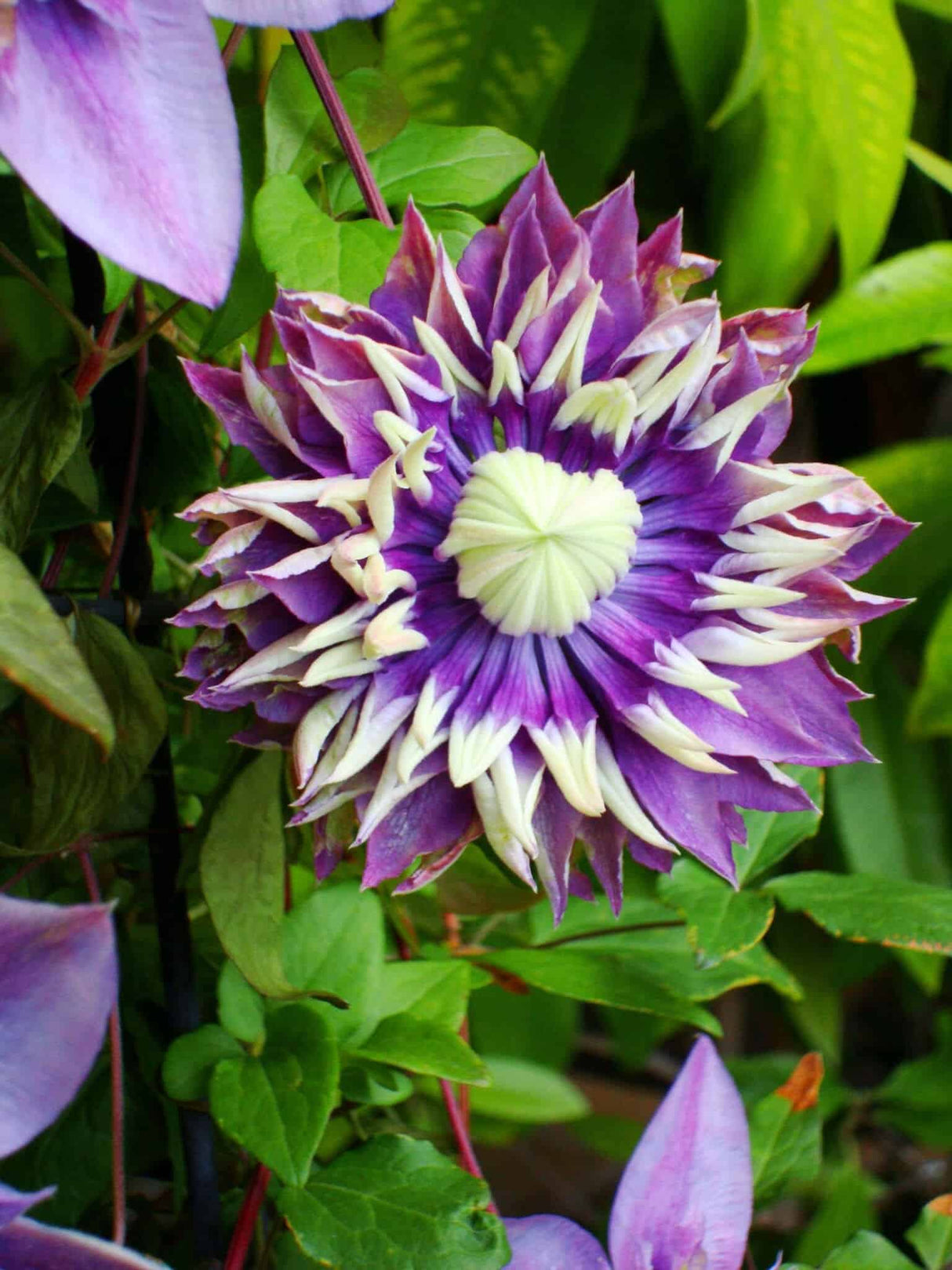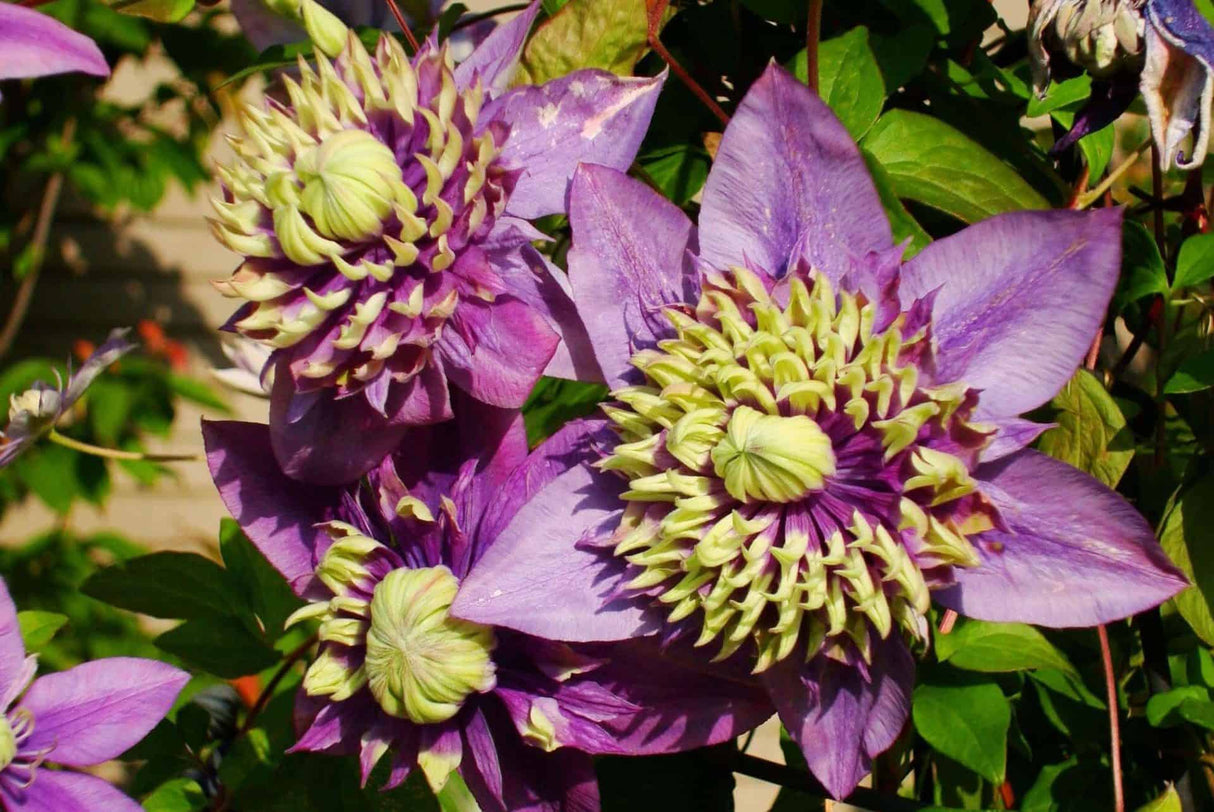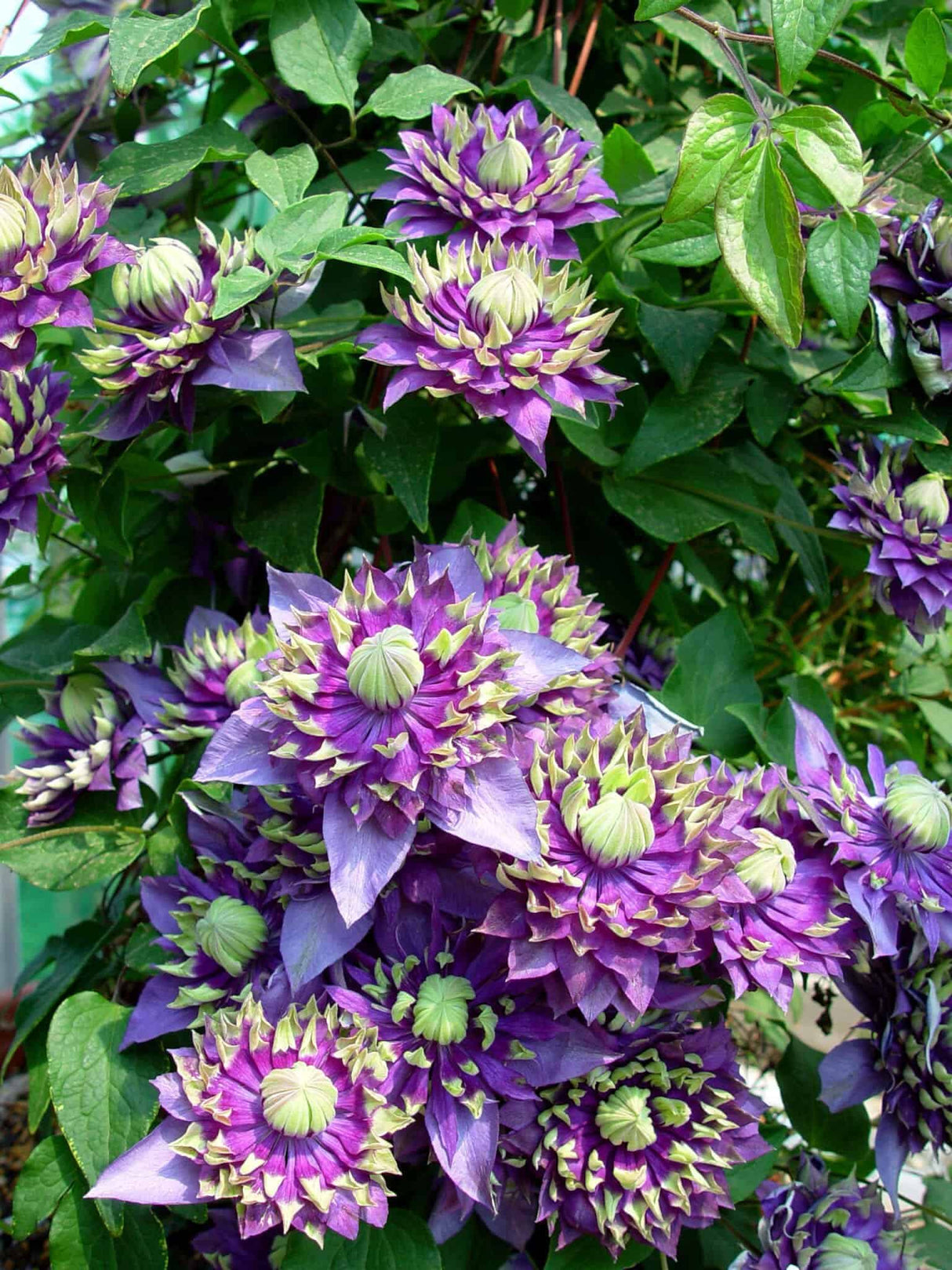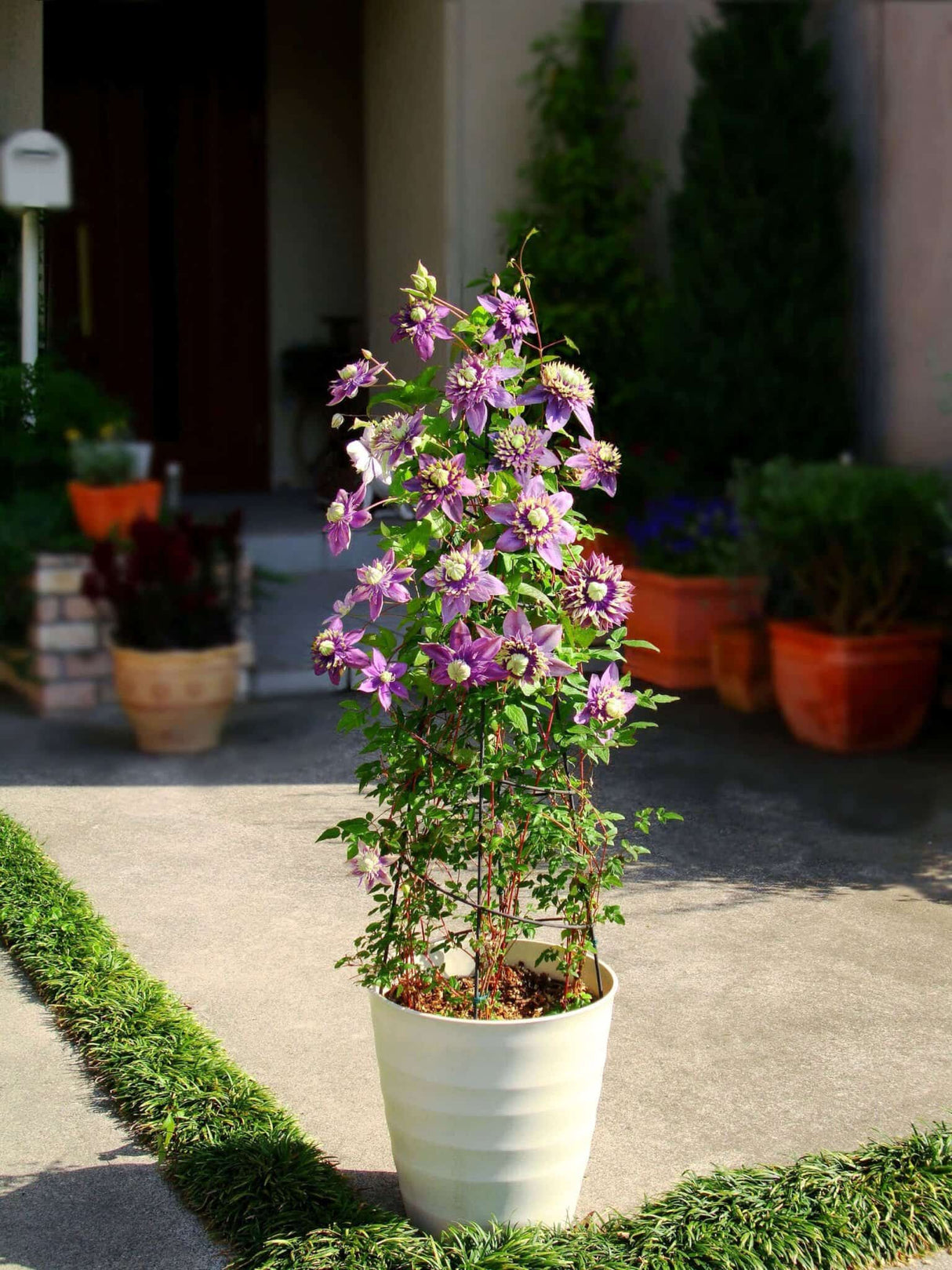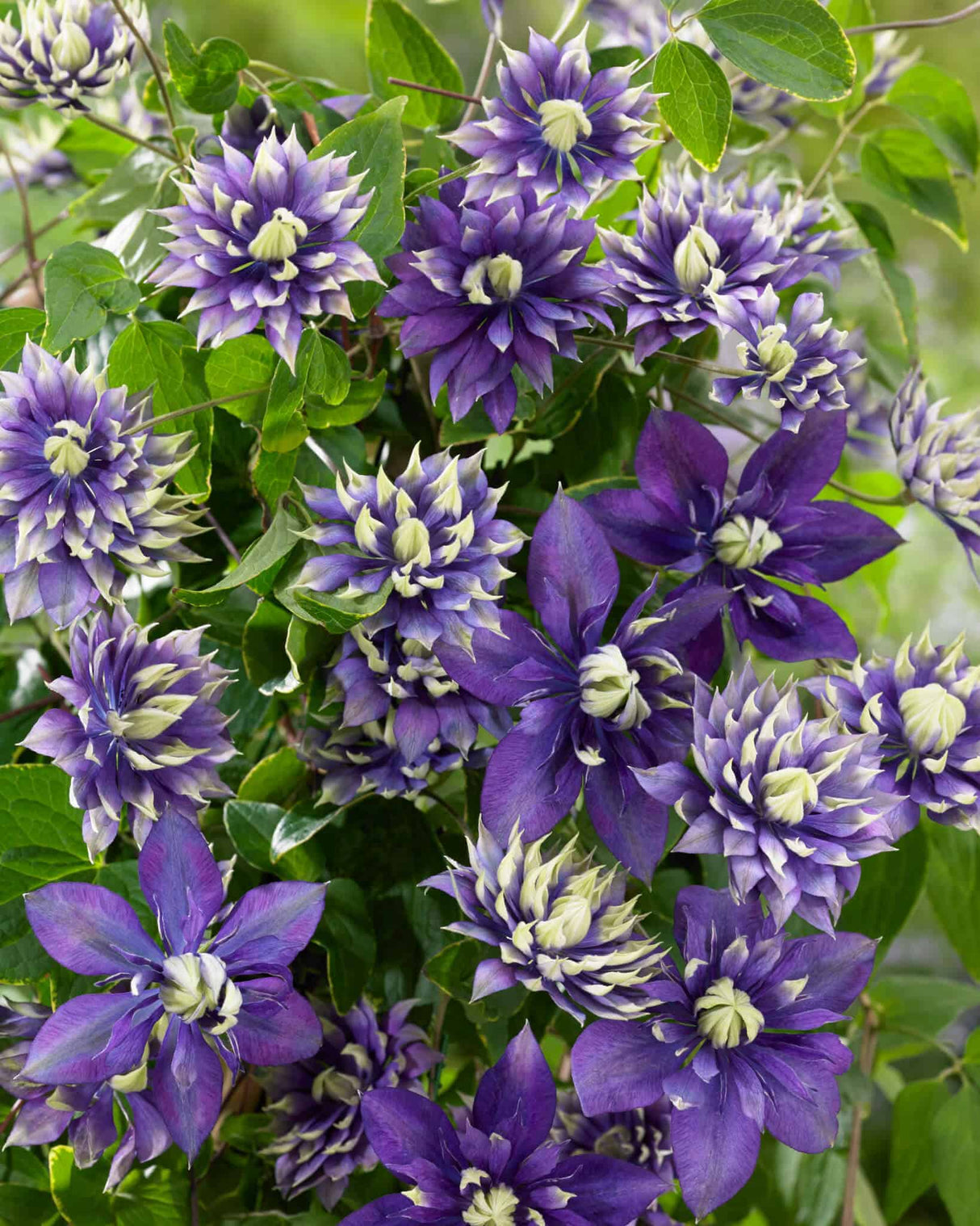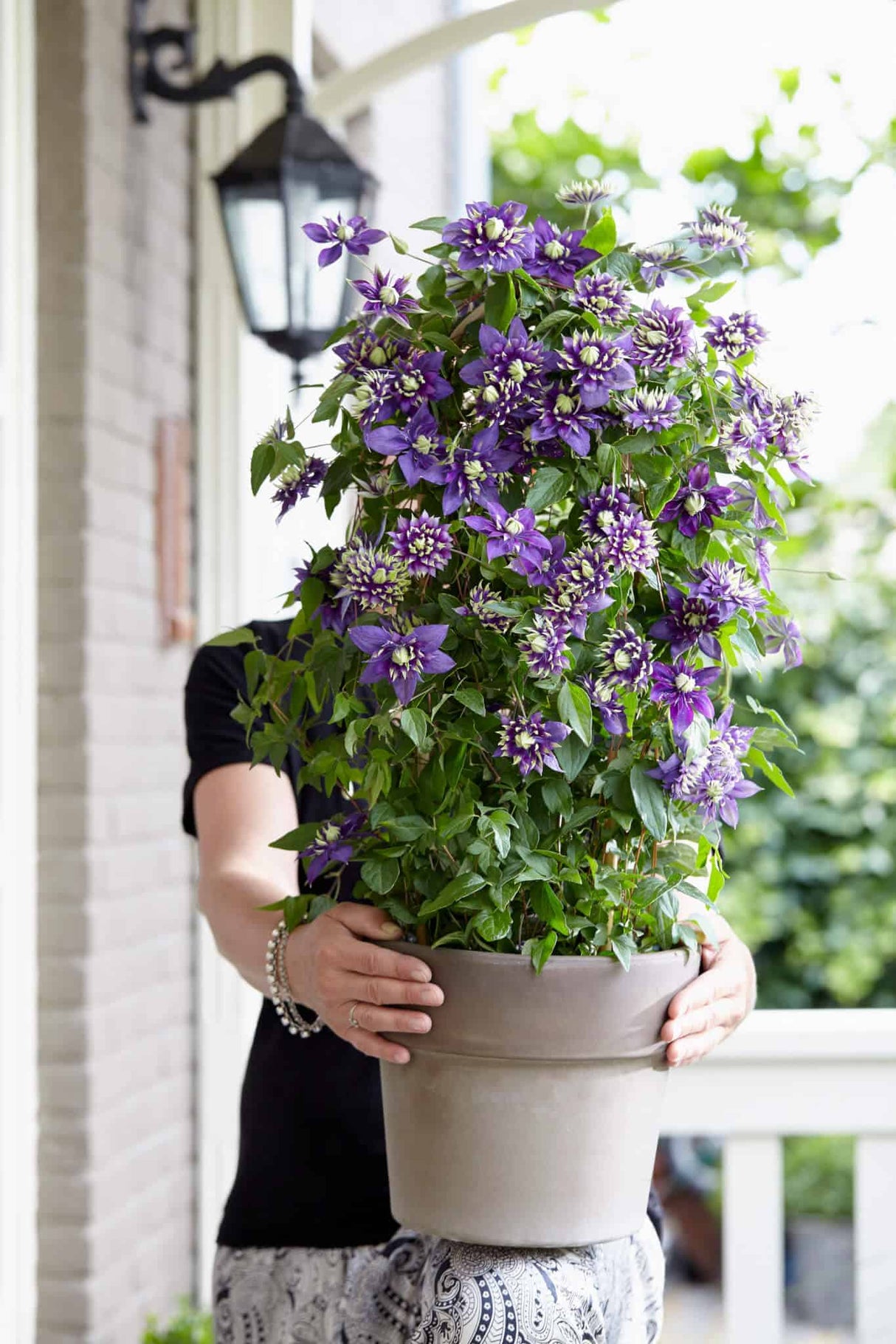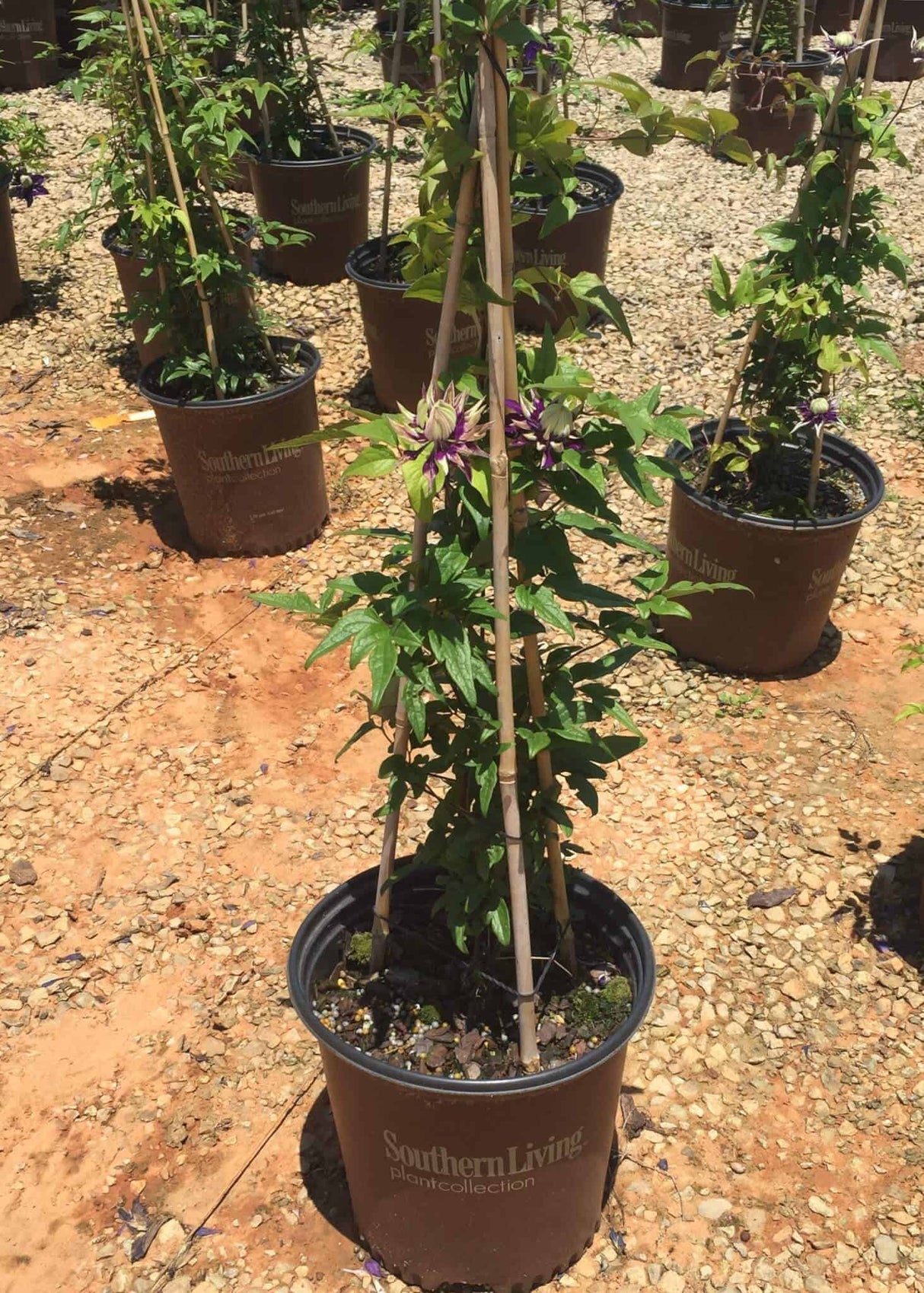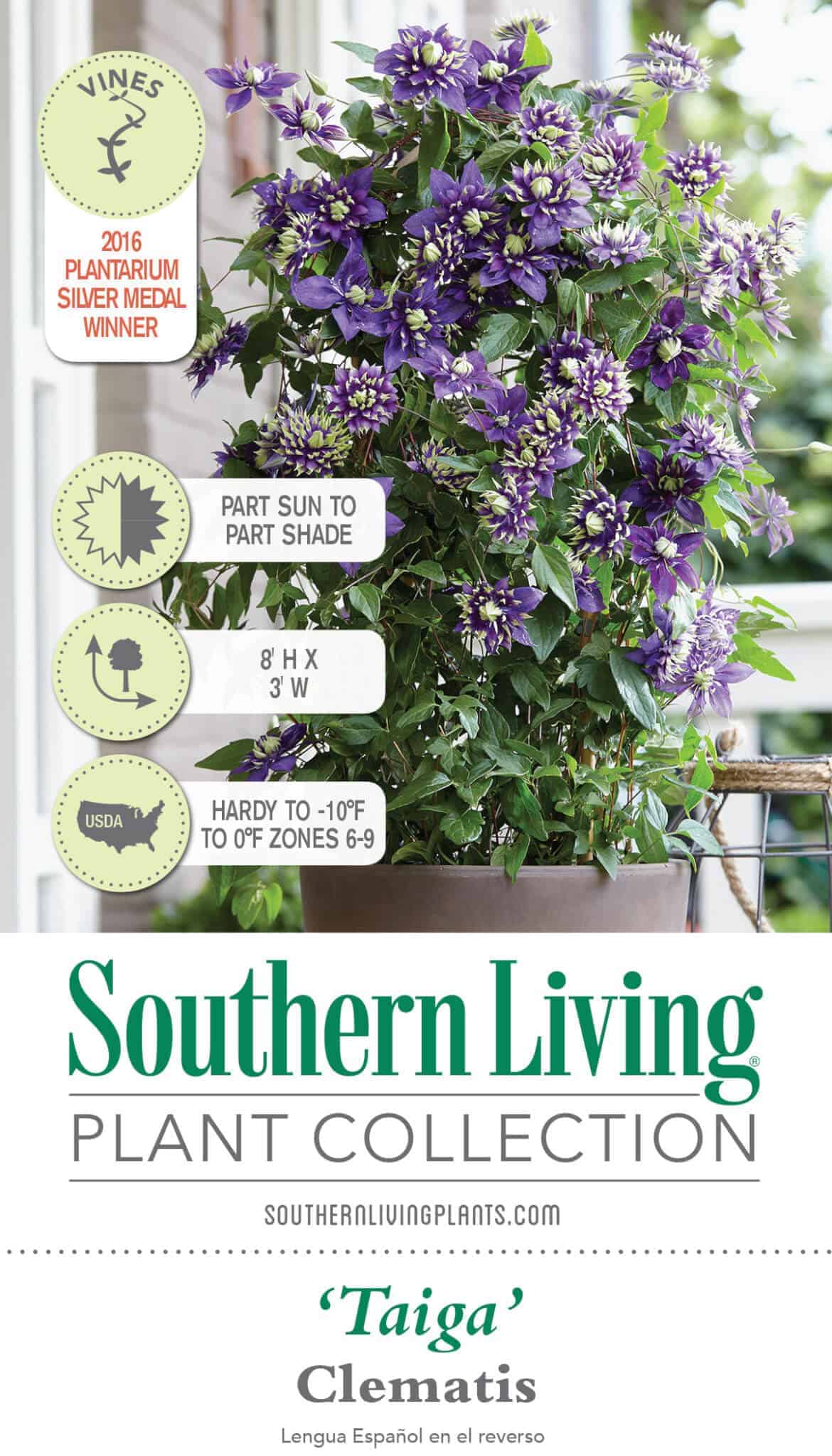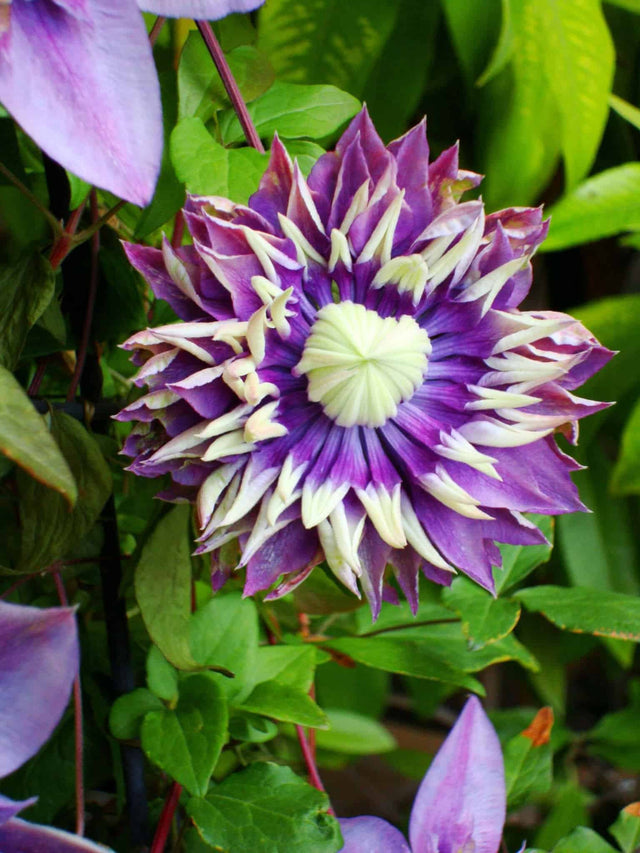Taiga Clematis
Taiga Clematis - 1.5 Gallon is backordered and will ship as soon as it is back in stock.
Description
Description
A natural garden standout, the Taiga Clematis from the Southern Living Plant Collection is a true landscape beauty! The Taiga produces phenomenal double purple flowers with yellow-green tips. These gorgeous blooms create a true spectacle as they cover a considerable portion of this vine. Furthermore, an initial bloom is followed by additional blooms late into summer and fall.
Light green foliage emerges in spring and matures to a rich shade of green. This foliage will last until cold weather arrives, at which point the deciduous Taiga Clematis goes dormant for a winter slumber. However, some warmer zones may find this vine to be semi-evergreen.
This moderate grower features a reliable climbing habit and is stunning on a trellis. This Clematis can only grow around thin supports, so keep that in mind when selecting a trellis or fence. Furthermore, attaching this vine to walls requires the usage of additional supports, such as mesh, nails, or screws.
We also recommend planting this eye-catching vine in a container. Try pairing it with the Everillo Carex for a unique texture and color contrast.
At a mature size of 8' H x 3' W, expect to be wowed by an impressive bounty of blooms.
Taiga Clematis Care
Hardy from USDA Zone 6-9.
Plant in Full Sun to Part Shade. Full sun will yield more blooms, but be careful if you are located in the Southern US. Afternoon sun in particularly intense in these areas. Consequently, it can prove too harsh for this vine. Instead, plant the Taiga Clematis where it will receive morning sun and afternoon shade.
Well-draining garden soil is essential. If your soil drains poorly, try amending it with some compost. This will improve the quality of the soil, as well as providing steady food for your plant for several months.
Water regularly until established, traditionally a few months. This will help ensure its long-term success.
Fertilize in early spring with a high phosphorus fertilizer, such as a 10-30-20. This will encourage greater bloom production. After the initial application has worn off, fertilize later in the year with a balanced fertilizer to encourage further growth.
Prune dead branches and weak stems in late winter to early spring.
Care & Use
Care & Use
Spacing Recommendations
Spacing Recommendations
-
Scientific Name
-
Hardiness Zone6, 7, 8, 9
-
Sun ExposureFull Sun to Part Shade
-
Evergreen or DeciduousDeciduous
-
FeaturesAttracts Birds / Butterflies, Climber, Disease Tolerant, Flowering
-
Feature ColorGreen, Purple, White
-
UsesContainer
-
Water NeedsMedium
-
Bloom SeasonFall, Summer
Growing Zones : 6, 7, 8, and 9

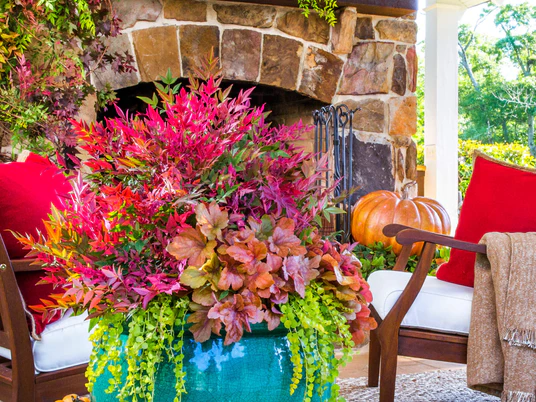
Southern Living Plants
